Tours from Tangier
Tours from Tangier
The best itineraries
Our travel service provides high-quality Tangier Tours with the greatest itineraries. Furthermore, you have the option of creating your own itinerary based on your specific requirements.
Best Morocco landcapes
With our Tangier city and desert tours, you will be able to view the beauty and learn about our country's rich history. Furthermore, you will have the opportunity to explore sceneries and Moroccan sights with our local guides.
Money back guarantee
When you book one of our city or desert tours from Tangier, you have 15 days to cancel your reservation.
Pure local guides/drivers
Our local guides and drivers are among the finest in the tourist industry. With great professionalism and quality, they will ensure that your demands are met and that you have the best desert and city tours from Tangier.
Choose the perfect plan for you
Our staff can provide you with the best desert and city trip itineraries departing from Tangier. The following is a list of our tours departing from various cities. If you want to modify the itinerary, please contact us so that we can accommodate the modifications.
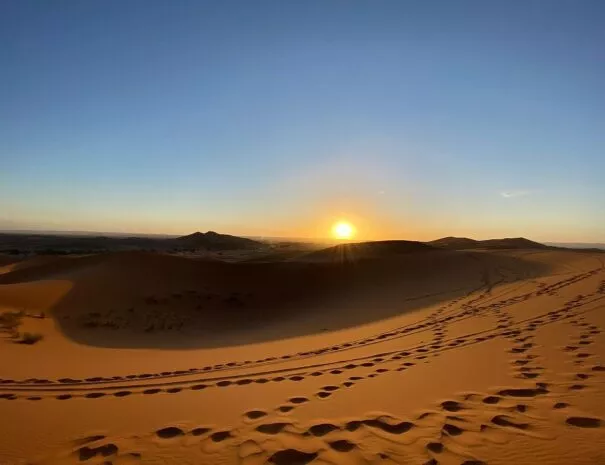
- 2 days tour from Marrakech to Zagora
- 2 days tour from Marrakech to Merzouga
- 2 days tour from Marrakech to Fes
- 3 days tour from Marrakech to Merzouga desert
- 3 days tour from Marrakech to Fes
- 4 days tour from Marrakech to Merzouga desert
- 4 days tour from Marrakech to Fes
- 5 days tour from Marrakech to Merzouga desert
- 5 days tour from Marrakech to Fes
- 6 days tour from Marrakech to Merzouga desert
- 7 days tour from Marrakech to Fes
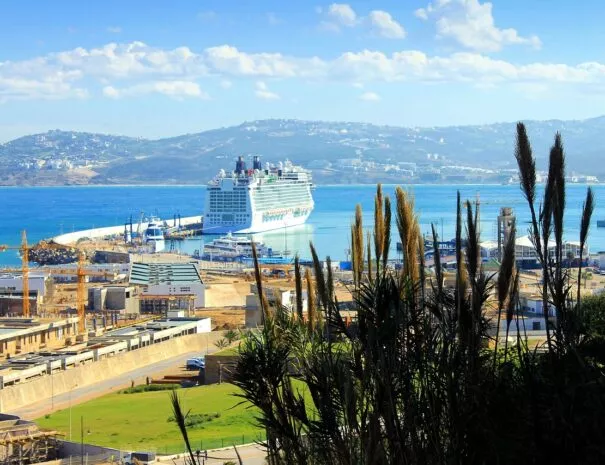
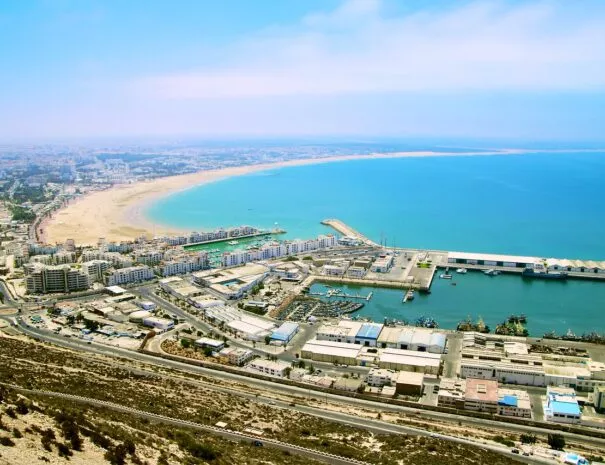
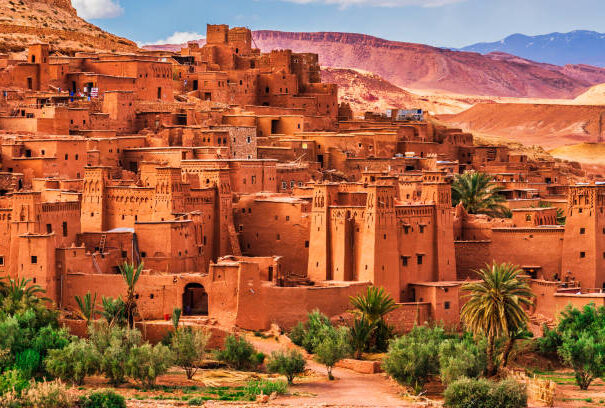
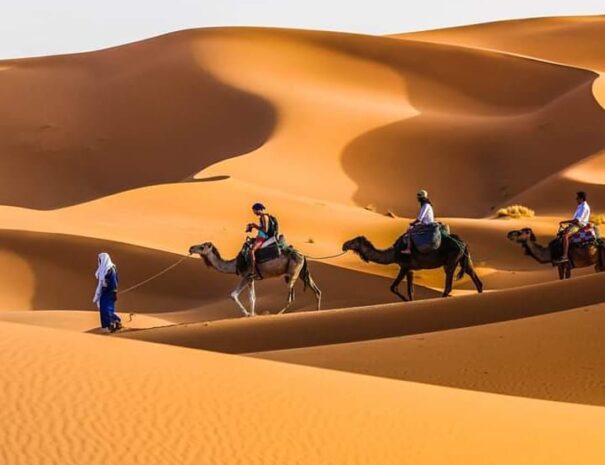
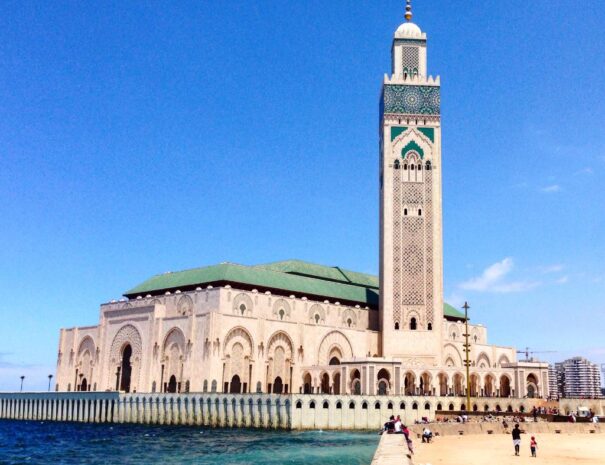
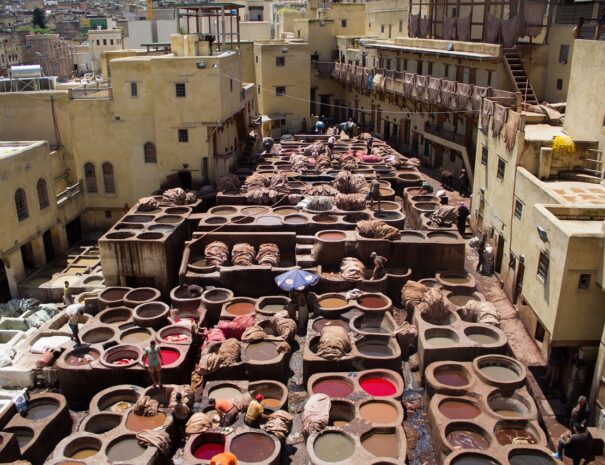
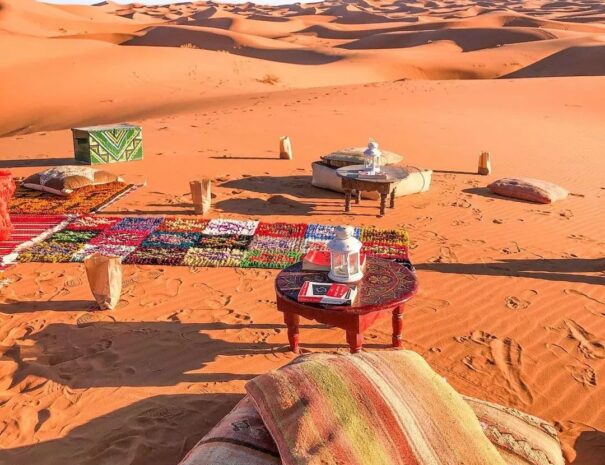
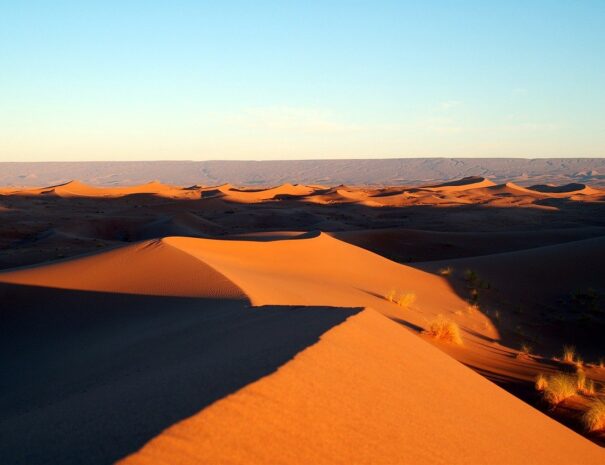
Desert tours from Tangier sites:
With our Tangier city and desert tours, you’ll leave with a broad knowledge of Morocco, its attractions, and its stunning scenery. Before embarking on a vacation, you should have a general concept of the locations you intend to see. The following is a list of the most popular sites to visit on a tour from Tangier. Please contact us if you require any further information.
Tangier:
History of Tangier:
Carthaginian visitors described Tangier’s harbor about 500 BC. The Phoenician sailors were most likely here previously. Tangier also became a part of the Berber kingdom of Mauritania following the collapse of Carthage. Tanger afterwards became a province of the Great Roman Empire, the seat of Moorish Tingitania, and a part of the Byzantine Empire under the reign of Emperor Diocletian.
Tangier had become one of the most important Mediterranean ports by the 14th century, with sailors from all over Europe frequently visiting. Loaded with textiles and metal, which were exchanged in local marketplaces for leather, carpets, sugar, and spices.
For over 300 years, the city, which sat at the crossroads of Africa and Europe, moved from the hands of the Spaniards to the Portuguese and the British. As a result, Tangier became a battleground in the late nineteenth century. France, Spain, the United Kingdom, and Germany all battled for it. However, a special meeting was called in 1906, and Morocco was partitioned into two zones of influence: Spanish and French. Tangier, which could not be divided, was designated as a special zone managed by an international commission.
The city was only able to enter the Kingdom of Morocco when the country’s independence was established in 1956. Not to add that the Portuguese erected Tangier Casbah, or fortification, in 1771. They didn’t have to look far for the materials because they came from the ruins of Roman Empire buildings. The Strait of Gibraltar and the mountains on the Spanish side may be seen from the casbah’s observation deck.
The modern Tangier :
There is the “Place de France” and the famous Tangier Cafe “Paris” in the modern part of Tangier, as well as the prestigious quartier of “La Montagne” with chic houses. In Tangier’s downtown, we may also discover the Grand Socco. The name comes from the Spanish word “socco,” which means “store,” however this location is no longer a retail district.
On Socco, there are several cafés and restaurants, as well as souvenir shops. Furthermore, a pedestrian route runs from the location, passing through the city’s key attractions and ending in Tangier’s Kasbah. The Kasbah was erected on the Medina’s highest point and has been quite well preserved to this day. In addition, the Palace of the Sultans, which was erected during the reign of Sultan Mula Ismail in the 17th century, is worth a visit.
The well-known “Pillars of Hercules,” which are actually caverns, are 18 kilometers from the city. These caverns formed over many hundred years as a result of seawater, and subsequently by humans who mined stone here for millstones. In addition, Hercules lived in these caves after discovering Tangier and creating the Strait of Gibraltar, according to Greek mythology. The water fills the caverns at high tide and recedes at low tide.
To summarize, you will be able to explore the grandeur of this city and appreciate its amazing attractions with our desert and city tours from Tangier.
Rabat:
Introduction :
Rabat, along with Marrakech, Fes, and Meknes, is one of Morocco’s four “imperial” cities. It is strategically located in one of Morocco’s five valleys. During the “holy war” between Moroccan Muslims and Spain, the city attained its zenith. Rabat was made impenetrable by Moroccan Sultan Abd al-Mumen and his military grandson Yakub al-Mansur. Furthermore, the major fortification of the city is known as the Kasbah of the Udayas. It derives from the name of the Berber tribe Udayas, which served as the city’s initial garrison.
Rabat has the shape of an irregular quadrilateral, bounded on the south and west by a wall with a gate (Bab). The Kasbah of the Udayas, a stronghold dating from the 12th to the 17th centuries, is also located in Rabat’s historical centre. It is situated on a rocky cliff near the mouth of the Bou Regreg river in the sea. Furthermore, the castle served as a powerful bastion of the corsair republic, providing security from pirates and incursions by dissident tribes. Furthermore, its past military significance may be seen in a large niche of brownish-red brick and in some places intact loopholes and bastions. The Tower of the Pirates, which dominates the Kasbah, was erected by Andalusian immigrants who became corsairs.
Rabat’s architecture, which is a blend of European and Oriental styles, astounds visitors. Mosques, old fortress ruins, marketplaces, minarets, fishing villages, Christian monuments, temples, and European-style cafés may all be found here. Rabat is also located on the Atlantic coast, near the mouth of the Bou Regreg river.
Foundation of the city :
Rabat was established in the 12th century. The fortified hamlet of Rabat al-Fath (in Arabic – “victory camp”) was established around 1150, during the rule of the Almohad dynasty in the Maghreb, near the remains of the ancient colony of Sala. It was used as a base for Muslim military excursions to Andalusia, as well as to fight foreign oppressors later on. The city’s growth began around the end of the 17th century.
Rabat served as a sanctuary for Muslims driven from Spain in the early 17th century, and it was only after the French conquest that it became the capital. Rabat’s population is approximately evenly split between Muslims and Europeans.
In the nineteenth century. Rabat rose to prominence as Morocco’s political and economic capital. It serves as the administrative seat of the French protectorate zone of Morocco from 1912 until 1956. It was one of the focal points of Moroccans’ national liberation fight against colonialists between 1930 and 1950. Rabat became Morocco’s capital after the country’s independence in 1956.
Casablanca:
Hassan II mosque :
Casablanca was little more than a Berber colony. The city’s name is derived from the Spanish translation of the term “White House,” which was given to the city by its people. The massive Hassan II Mosque is the city’s most stunning structure. It appears to be a beautiful ship built on the brink of the ocean. In terms of height and magnificence of interior design, the Hassan II Mosque is unparalleled in the Islamic world. It includes frescoes, mosaics, wood carving and painting, and Arabic writing by Morocco’s finest accomplished craftsmen.
The prayer chamber is beautifully decorated with 78 pink granite columns. The flooring are also covered with golden marble tiles and green onyx. Furthermore, the space is illuminated by 50-ton Venetian glass chandeliers. Furthermore, the chamber can hold 20,000 worshipers, with an additional 80,000 on the esplanade. The minaret reaches a height of 200 meters above sea level. For 30 kilometers, a laser beam beats from the top of the minaret, indicating the direction of Mecca. In addition, the mosque serves as an Islamic cultural center, complete with a madrasah, library, and museum. The mosque was built by French architect Michel Pinseau and opened in 1993.
After viewing the city’s main attractions, don’t forget to go to Our Lady of Lourdes Church, the Museum of Islamic Art, and Mahama do Pasha.
Casablanca is now the Kingdom of Morocco’s economic, financial, and commercial center. Located south of Rabat on the Atlantic coast. It is a skyscraper city featuring the Hassan II Mosque, which can hold 25,000 people for prayer at the same time, plus additional 80,000 on the square surrounding the mosque.
Mohammed V airport :
The ultra-modern Mohammed V airport is a reflection of the city, combining modern technology with traditional architecture. A growth plan for the city was developed at the beginning of the twentieth century, restricting its breadth expansion. As a result, huge structures began to spring up. Casablanca’s core is now a collection of streets developed around the flanks with new structures. Nonetheless, they stand out for their uniqueness and national character. The city has a population of about 3.5 million inhabitants.
Casablanca’s port and attractions :
Because Casablanca lacked a natural port, a 3-kilometer marina was created here. Casablanca has the largest port in the Atlantic and is located at the crossroads of Europe, Africa, and America. The local port is Africa’s fourth biggest. Not to add that while you can swim on the beach in Casablanca, Agadir is more suited for a beach holiday. The beaches are man-made, yet they are of comparable quality to natural beaches.
Casablanca’s nightlife revolves around the Corniche district. You may stroll along the beach, eat at open restaurants, and visit pubs, discos, and nightclubs.
The city has retained its national character, standing as a testament to its country’s turbulent history.
Casablanca’s ancient medina is a maze of tiny alleyways and an unending market where you can purchase anything.
To summarize, this city is suitable for hosting a variety of conferences, seminars, and business meetings. Many hotels provide conference rooms and fitted meeting rooms, and the hotels have extensive expertise organizing such events.
Fes:
Introduction :
Fes was founded 1200 years ago by the Moroccan saint Moulay-Idris I. Fes eventually became the capital of an empire whose borders stretched from Spain to Senegal. One of the holiest locations in Muslim Morocco is the grave of the city’s founder, Moulay-Idris. Pilgrims from all around the country travel long distances to come here. In addition, the small and twisting alleyways of the medina, as well as the noise and bustle of the eastern market, combine to create a unique impression for a European in Fes el-Bali. You may easily get lost here in a few of minutes. More than 9,000 streets and alleyways are unnamed in this city.
History of Fes :
Originally, the city’s core population consisted of 8,000 households who had been exiled by Christians from Andalusia, Cordoba, Seville, and Granada. After 100 years, another 2,000 families from the Tunisian town of Kairouan joined them. “All roads lead to Kairouan,” they say in Fes.
Fes is one of the country’s four imperial cities, and it has the largest and most magnificent medina. It is quite simple to become disoriented in this area. Furthermore, the historic city of Fes el-Bali includes around 9400 streets and alleyways. Furthermore, with Morocco’s independence in 1956, the city became one of the country’s key economic and cultural hubs. The Medina of Fes el-Bali was designated a World Cultural Heritage Site in 1980.
Leather and wool have been processed and colored in local dyes and leather tanning since the 14th century. In the past, only natural colors were employed here. The things have changed, but the old workshops have not.
With a population of 940,000 people, Fes is Morocco’s third-largest city after Casablanca and Rabat. Fes is also one of the four “imperial cities” (Marrakech, Meknes, and Rabat). It is still regarded as the spiritual core of Morocco’s Kingdom. It is 60 kilometers from Casablanca.
Festival of Sacred Music :
Every year, in the beginning of June, Fes hosts the International Festival of Sacred Music. In Fes, the most well-known musicians from religious communities in the Middle East, Asia, and the West gather. That is in order to have a week of concerts, conferences, exhibitions, seminars, and experience exchanges. Sufi dervishes from Turkey dance here, and you may listen to trance-inducing Berber music, Arab-Andalusian music, Hindustani sacred songs, Celtic sacred music, and psalm singing.
Moulay Idris Mosque :
Fes is a one-of-a-kind city. The Moulay-Idris Mosque (9th century) is one of Islam’s most guarded shrines. Animals are not even allowed to approach it because of this. In addition, the Tomb of Idris is draped in golden silk brocade in this city. As a result, pilgrims flock here hoping to discover good luck. Wooden boards 1.6 m above the ground serve as a reminder that you are approaching a sacred space where believers must bow in front of a huge shrine. The mausoleum of the city’s founder may be located in the Zawiya district. A memorial plaque with a hole in it may be seen on the mausoleum’s wall, where faithful Muslims can place their hands.
Marrakech:
Foundation of Marrakech :
Yusuf ibn Tashfin, founder of the Almoravid dynasty, founded Marrakech in the 1070s. The major reason for this is to restrict caravan traffic across the Atlas Mountains. In a relatively short period of time, Marrakech grew to become an important center for a portion of North Africa, all the way to the Libyan border.
Marrakech is one of Morocco’s old and mystical capitals. It is located in the heart of the nation, at the foot of the Atlas Mountains. Furthermore, the city is equidistant between both Casablanca and Agadir. Despite the fact that Marrakech is not on the shore, people from all over the world visit for pleasure.
Jemaa el-Fna square :
The Medina is surrounded by a wall that stretches for several kilometers. Its heart is the Jemaa el-Fna plaza, which is on the UNESCO list of cultural heritage sites. It’s a genuine hotspot of Moroccan exoticism, with snake charmers playing pipes, street musicians playing unknown musical instruments, tattoo artists applying henna to visitors, ancient storytellers telling their stories to everyone, fire-eaters awe with their displays, and drums ringing in the background. Furthermore, at an open-air restaurant, aniseed snails are boiled, music is played, and massive delicious dates are distributed everywhere…
Marrakech attractions :
Among the architectural landmarks are the Koutoubia mosque, Yusuf ibn Tashfin’s tomb, the Golden Apple Mosque, and the Bahia Palace. In addition to the Saadi dynasty’s mausoleum, the royal residence Dar el-Makhzen…
The Bahia Palace is worth seeing in the city. This beautiful structure was erected in 1880 by Ba Ahmed, the principal vizier of the sultans Moulay Hassan and Moulay Abd El Aziz. This property is encircled by an eight-hectare garden, and the building itself is made up of beautiful apartments that overlook the patio. For seven years, a thousand artisans from Fes are reported to have labored on the palace. Not to mention that 160 of the palace’s rooms are unavailable to guests. The royal army currently occupies a portion of the Bahia Palace grounds. That is why there is a guard at the palace’s entrance.
The building of the Koutoubia Mosque began during the reign of Abdelmumen, the first monarch of the Almohad dynasty. After that, his grandson, Yakub El Mansour, added a magnificent minaret to the mosque, which still stands today.
Agadir:
History of Agadir :
A Portuguese marine trader chose to build the fort of Santa Cruz de Cap de Gue in 1505, on the area of modern-day Agadir. The fort was ceded to the Portuguese government eight years later when King Manuel I of Portugal purchased it. The reason for this was to station a garrison there. By this time, Agadir had established itself as a port of call for ships sailing to Sudan or Guinea, or from there to Europe. In addition, it is a bustling commercial area frequented by Portuguese, Genoese, and French sailors.
After then, the city was captured by Moroccans in 1541 by the Saadian Sultan Mohammed el-Sheikh. However, the city has traditionally been the primary export port for goods. We mostly discuss sugar cane. Moroccans from the Sousse valley erected a kasbah on the location of the Portuguese port. Later, in the 17th century, the Berbers took over Sousse’s plain, while Moulay Ismail progressively controlled the shore.
Nevertheless, in 1760, Sidi Mohammed altered the city’s status by shutting the port and establishing a new port in Essaouira. In 1911, the French and Germans fought over Agadir because they both valued the city’s strategic location. Agadir did not begin to expand significantly until after the First and Second World Wars. Later, Agadir’s golden period arrived, and ships carrying sugar cane, wax, leather, oils, spices, and gold arrived in the city on a daily basis. This went on until 1960.
Agadir was revived as an entertainment center as a result. People utilized earthquake-resistant technologies to construct its new structures..
Agadir today :
Agadir is now a coastal resort in southwest Morocco, as well as the administrative seat of the same-named Moroccan province. It is the most populous tourist destination, with contemporary hotels, discos, nightclubs, and restaurants. In addition to a significant port city and a fishing hub. Al Massira Airport is 28 kilometers south of the city.
Agadir is located on Morocco’s Atlantic coast, almost equidistant between the country’s northern and southern borders. The Canary Islands are located in the ocean in front of Agadir, although somewhat to the south. Agadir is situated near the southern end of the Anti-Atlas Mountains. Whatever road you choose from Agadir, you will be surrounded by magnificent natural beauty. If you travel east, inland, you may see the famous valley of Sousse, which is surrounded by magnificent mountains and is the hub of citrus fruit farming. A great number of wild birds, such as flamingos and ducks, may often be seen at the entrance of the Sousse River. Then there’s Taroudant, commonly known as Marrakech in miniature. Our desert and city tours from Tangier will take you to explore Agadir’s remarkable contemporary structures, including as the post office, town hall, and justice – white homes interspersed with gardens.